The prestigious American daily “The New York Times” has praised Albania as one of Europe’s most alluring and up-and-coming travel destinations, thanks to its stunning beaches, unspoiled nature, unique historical sites, and affordable prices.
In an article by Valeriya Safronova, Albania is described as a once-isolated country that is now emerging as a reference point for travelers from around the world.
“Breathtaking beaches, pristine nature, unusual historical landmarks, and low costs have transformed this former hermit state into one of Europe’s freshest destinations,” writes Safronova.
She particularly focuses on the ancient city of Butrint, in the south of the country near the Greek island of Corfu, calling it a paradise for history lovers: “Its ruins are a dream for history enthusiasts — an open-air theater, a Byzantine baptistery, and a Roman aqueduct.”
In the national park spanning 93 square kilometers, visitors can also see wildlife such as foxes, falcons, and eagles.
“In southern Albania, practically within swimming distance of the Greek island of Corfu, the city of Butrint has stood for thousands of years. Its ruined remains are the dream of a history buff: an open-air theater from when the city was a Greek colony, a Byzantine baptistery, and a Roman aqueduct. Foxes, peregrine falcons, and golden eagles roam the 36-square-mile national park that encompasses Butrint’s archaeological treasures.”
A 10-minute bus ride from Butrint, in the modern yet simple beach resort of Ksamil, tourists relax on sunbeds, dance to techno, and maneuver jet skis around a picturesque bay popularized by social media influencers, who compare its lush environment to the Maldives.
The ruined remains of the ancient city of Butrint.
Albania is the kind of destination where a traveler can begin the day exploring antiquity and end it with a spin in the sand. This may be a big reason why so many people are going there. Last year, 11.7 million people visited the country, up from 10 million the year before, and they not only headed for beaches and historical sites, but also explored the mountains and lakes in the north, as well as the pristine Vjosa River National Park — one of the 52 places to visit in 2023, according to The New York Times.
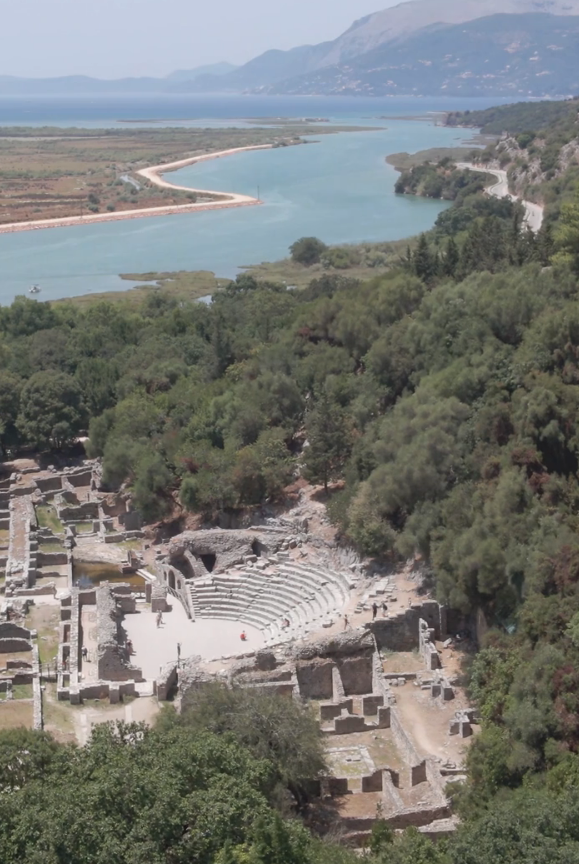
“Albania is still an exotic place for many people,” said Frenkli Prengaj, who runs tours for Discover Albania and spent two days driving me around. “When a tourist comes to Albania, they don’t have many expectations. They discover the history and realize we have much in common with Europe, a lot of history with the Ottomans. We’re somewhat stuck between East and West.”
Jet skiers and boats on the blue waters near Butrint.
The country, located between Greece and Montenegro along the Adriatic and Ionian seas, declared independence from Ottoman rule in 1912 and, beginning in the 1940s, spent decades under a Stalinist dictatorship, isolated from the rest of the world until 1992. In the late 1990s, Albania suffered an economic crisis followed by a period of turmoil that nearly erupted into civil war, but in recent years, the political situation has improved and tourism, fueled partly by low prices, has flourished.
Ksamil, “The New Albania.”
Ksamil, once home to a small community of volunteers working in agricultural collectives, has transformed into a popular beach resort. The bustling resort of Ksamil offers a striking example of the new Albania. During the decades of dictatorship, a small number of volunteers were sent to Ksamil to establish agricultural communities, explained Dorina Dhima, an independent guide. However, the area remained limited, she said, “because people could escape and swim to Corfu” — there may have been only four apartment blocks at the time.
That era has long passed, though you can still find quiet moments among Ksamil’s souvenir stands, street vendors, and throngs of beachgoers. I enjoyed a peaceful lunch of tender octopus (1,800 lek, or about $22) with a view of crystal-clear waters and leafy islands at a beach bar called Freskia e Jonit.
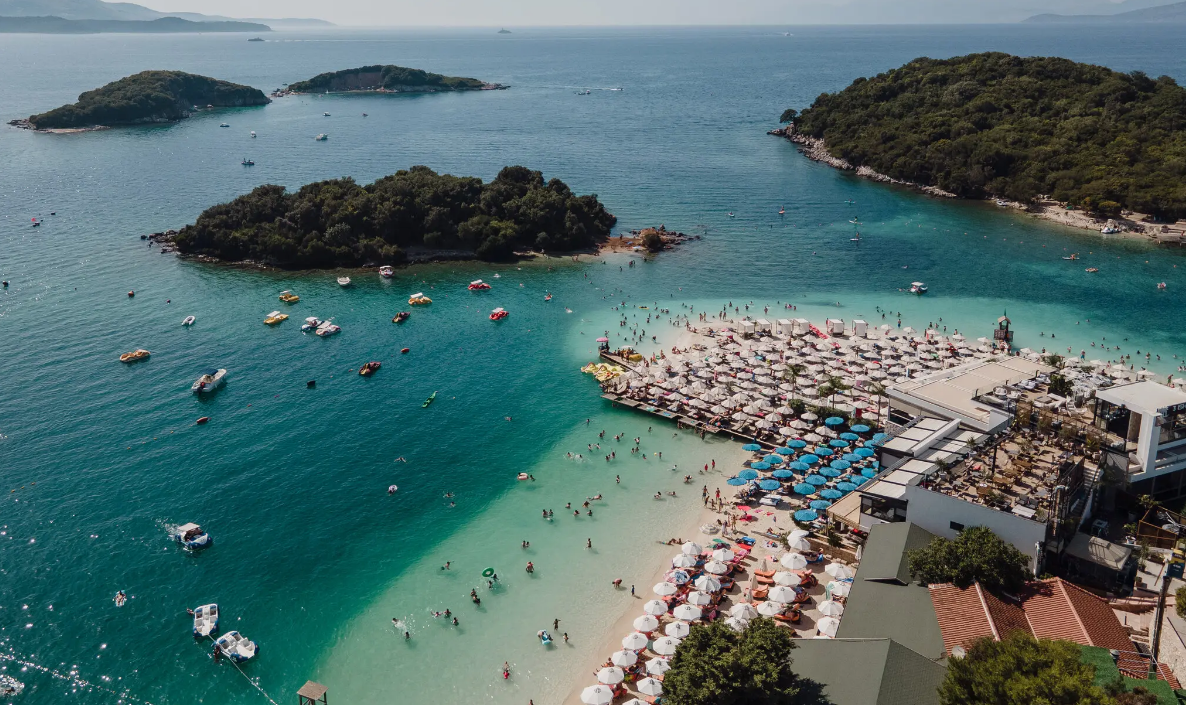
Grilled octopus and fresh tomatoes accompany the seaside view at Freskia e Jonit in Ksamil. But visitors who prefer less crowded beach holidays may choose to focus on coastal destinations like Jala, Borsh, or Dhërmi, one to two hours north. When I traveled in 2023 to Dhërmi for the Kala music and wellness festival, I was struck by the natural beauty of the landscape and the local hospitality.
The lively promenade of Saranda is filled with locals enjoying the beach, as well as plenty of food and drink options. About 20 minutes from Ksamil or a 30-minute ferry ride from Corfu (one-way tickets ranging from about $14 to $33), the coastal city of Saranda offers a similarly relaxed atmosphere: public beaches, a bustling seafront promenade full of well-dressed locals strolling, and many dining and drinking opportunities.
Berat, a UNESCO World Heritage Site.
About two hours south of Tirana, Albania’s capital, along the banks of the Osum River, the red-tiled roofs of the city’s houses climb the gentle slopes of the valley, with hundreds of windows peering out like watchful eyes.
Two women carrying parasols walk side by side along a sunlit cobblestone path.
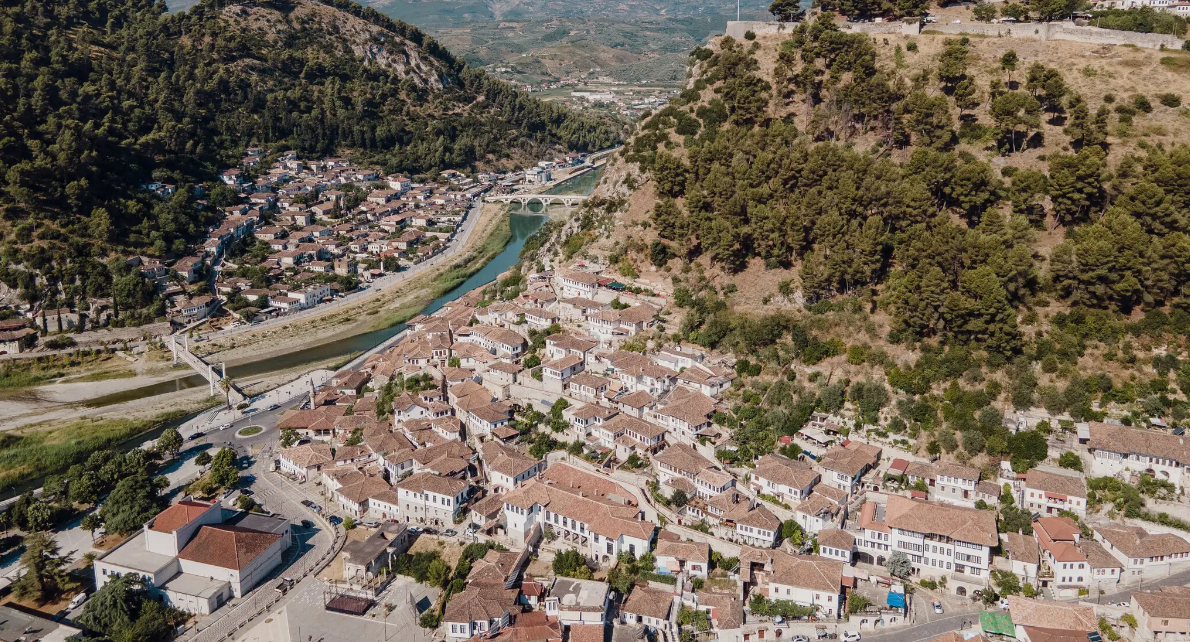
The city of Berat remains quiet until sunset, when the streets suddenly burst into activity.
The Berat Castle (free admission), an open-air complex of buildings above the city, includes a Byzantine church, the ruins of one of Albania’s first mosques, and a neighborhood of 18th- and 19th-century houses still inhabited, some of which are guesthouses. It also houses the Onufri Iconographic Museum, which displays religious artifacts dating back to the 1300s, including a richly decorated carved wooden iconostasis that blends Baroque and Byzantine elements.
When I visited Berat at the end of June, the city was quiet until sunset, when the streets suddenly filled with children riding bikes, men playing dominoes, and street vendors selling plastic cups filled with abundant grapes and cherries.
Red rooftops and juicy tomatoes.
At Amalia Homemade Food in Berat, I snapped nearly a dozen identical photos of my table — it was just that charming. My tomato salad was so juicy and vibrant that I felt as though I had rediscovered a long-lost knowledge of how a tomato should taste.
A pale yellow liquid pours into a wine glass on a table surrounded by plates and a wooden serving board filled with food.
The tables at Amalia Homemade Food are laden with fresh ingredients, and the meal usually ends with a glass of strong liqueur known as raki.
The rest of the fixed menu included baked cheese and vegetables in clay pots; whole peppers stuffed with rice and herbs; eggplant topped with garlic, pepper, and tomato; byrek (layered pastry filled with spinach and cheese); and Viennese schnitzel, a meat cutlet stuffed with cheese (11-course menu for two, €28 or $32).
As is typical in Albania, the meal ended with a glass of raki, a strong fruit-based brandy that is a staple across the Balkans.
“Those over 40 practically drink it every day,” said Andi Kallanxhi, an employee at Pupa Winery, a 20-minute drive southeast of Berat. “Two big glasses at 5 or 6 a.m., downed with a cigarette and Turkish coffee, two more around 10 or 11 a.m., another after work with coffee, and then three or four more again after work with yogurt sauce and garlic.”
The raki at Amalia, softened by a touch of cinnamon, was a refreshing, throat-warming blend and a perfect ending to my evening feast. Would I drink it for breakfast? Ask me again when I turn 40.
A dark gray tunnel with rows of doors lit by hanging lamps from the ceiling.
The Cold War Tunnel in Gjirokastër, one of thousands of bunkers built during Enver Hoxha’s dictatorship, is now a museum.
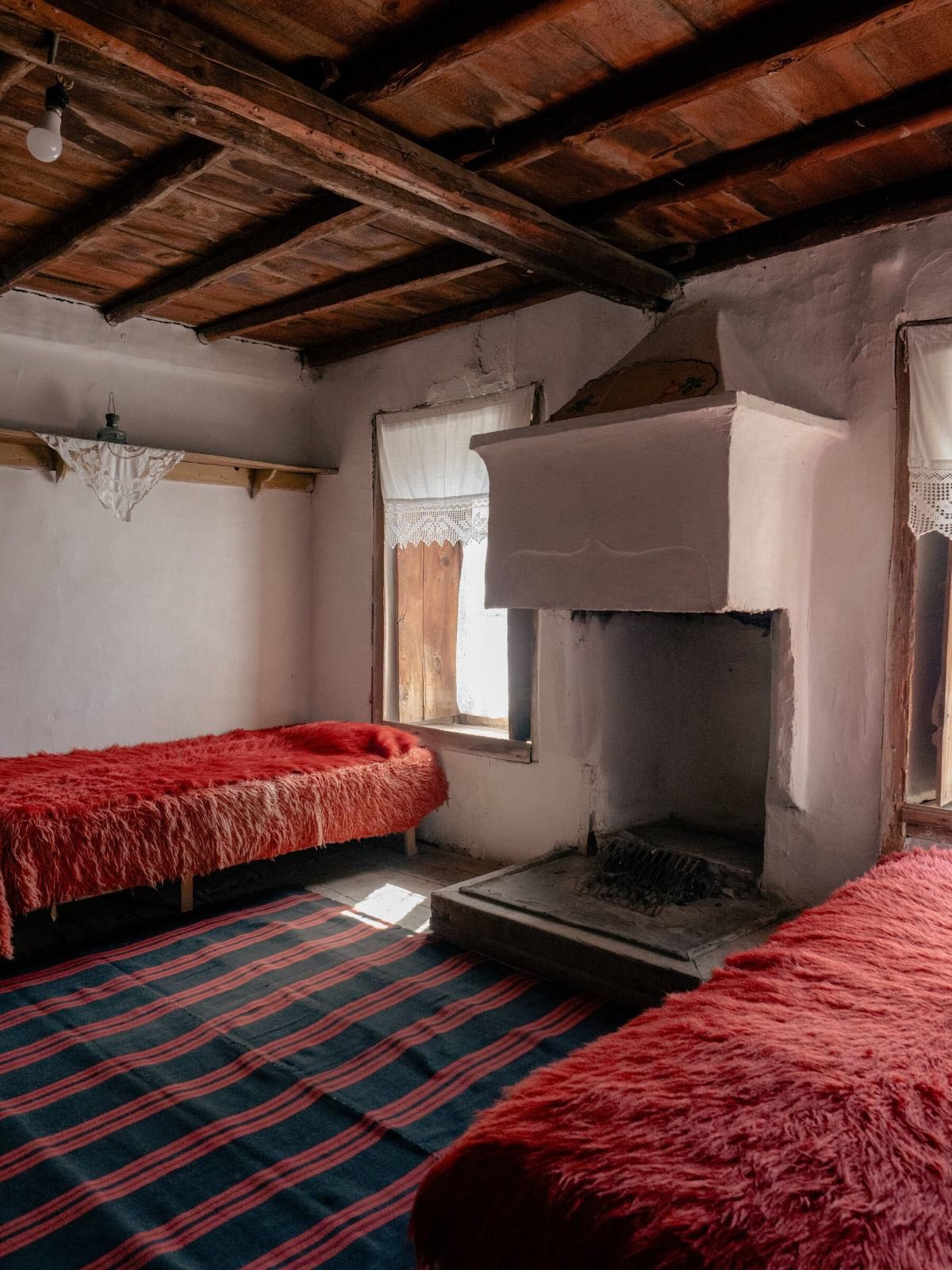
The Albanian Booker Prize-winning author Ismail Kadare described the city of Gjirokastër, about two and a half hours south of Berat, as a “prehistoric creature now carving its path on the mountainside.”
Gjirokastër seemed more like something out of a fairy tale, with its stone houses adorned with intricate wood carvings clustered around winding cobblestone streets. But it is a picture book with a darker side.
At the center of the city lies the Cold War Tunnel, one of thousands of bunkers dictator Enver Hoxha built across the country during his rule, from 1944 until 1985, fearing a foreign invasion. To join a tour (200 lek), head to the Experience Gjirokastër travel agency in Çerçiz Topulli Square.
A three-story white building with brown wooden details sits on a street corner. The ground floor houses a shop filled with hundreds of items on display.
The houses of Gjirokastër, decorated with wood carvings along winding cobblestone streets, give the city a fairytale feel.
If you climb beyond the historic center of Gjirokastër, you can visit a centuries-old castle, parts of which were used as a prison, most recently during Hoxha’s regime. The prison cells and torture rooms are largely preserved and form a chilling museum (200 lek). The additional admission fee includes entry to the Arms Museum as well as the Gjirokastër Museum, which offers a compact yet thorough history of the region.
At the Skenduli House, Edlira Skenduli, a descendant of the wealthy merchant family who built the home more than 300 years ago, guided us on a tour (300 lek).
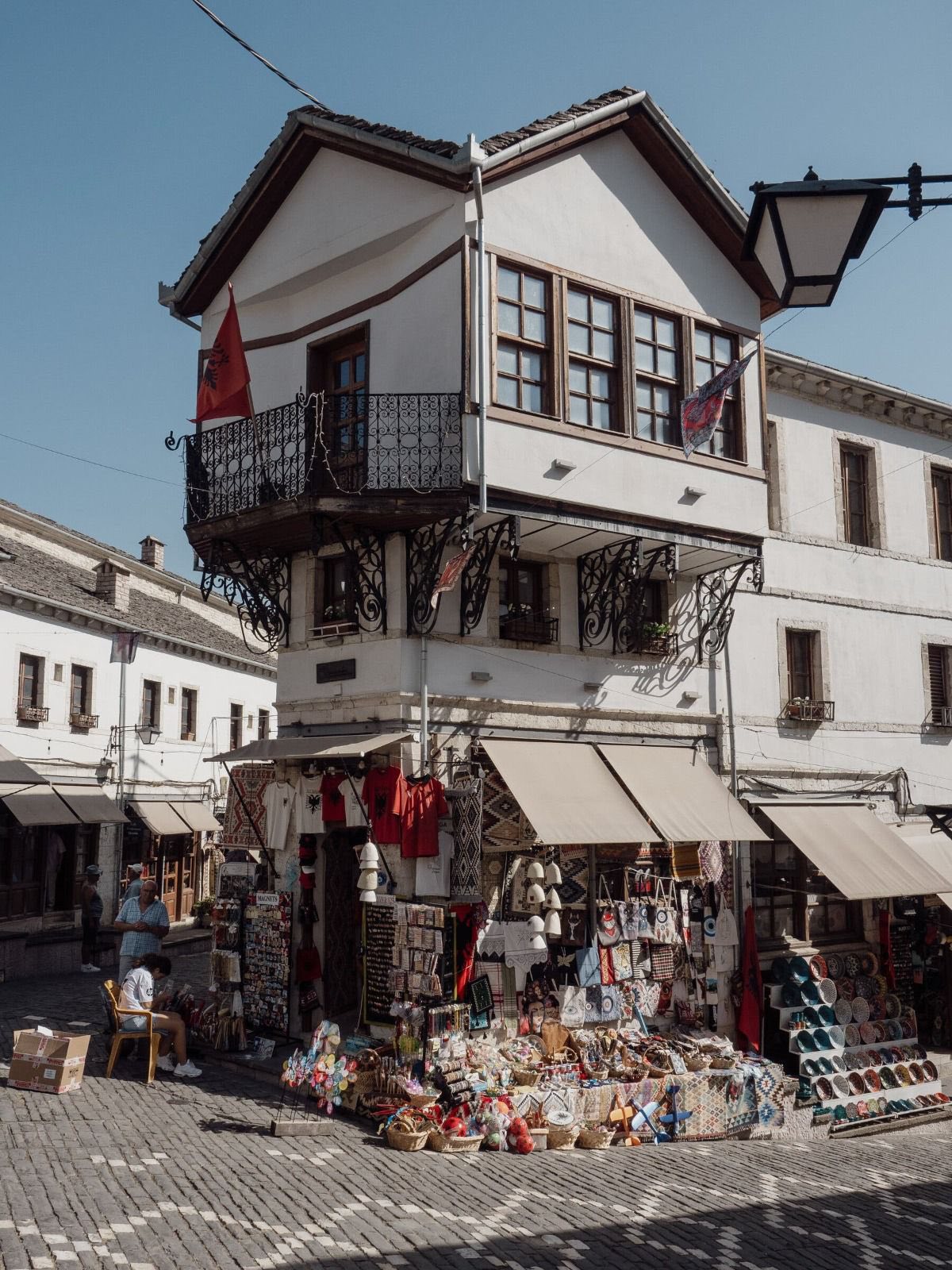
“It has 64 windows, 44 doors, six bathrooms, and four hammams,” she explained.
“The safe room of the house,” she said, “served as a shelter for 70 people during the First and Second World Wars. Other highlights included a natural refrigerator, an underground space cooled by an adjacent cistern, and the wedding room, decorated with painted and carved pomegranate wood, with a protected balcony reserved for unmarried women who wished to watch the ceremony.”
As I descended the slope from the castle toward my hotel, I watched the sun slowly set behind the mountains, leaving streaks of dusty orange and pink over the stone city.
A melodic call to prayer filled the valley, reminding me once again of Albania’s rich cultural heritage.
To read the original article, please click on this link.




